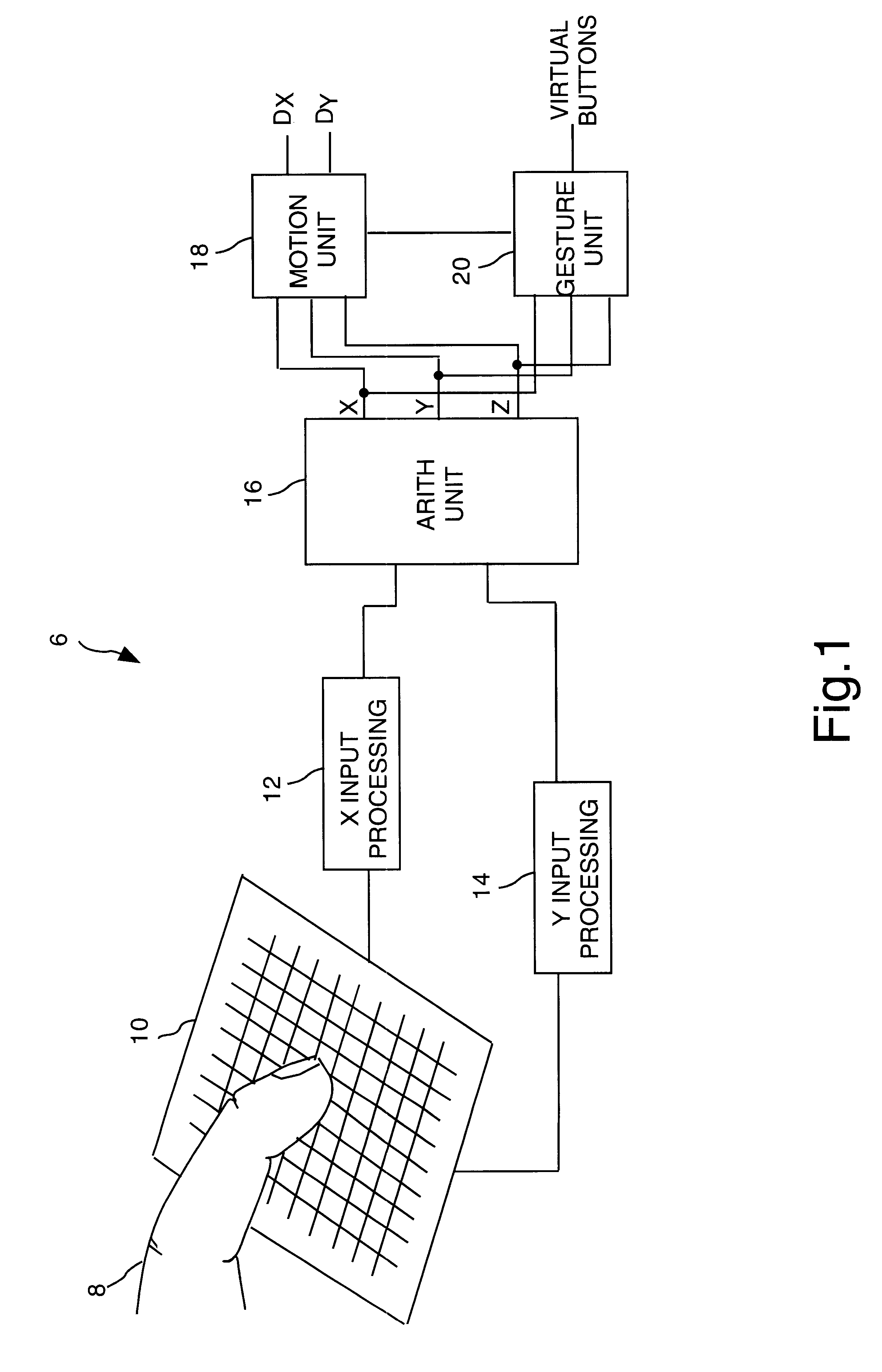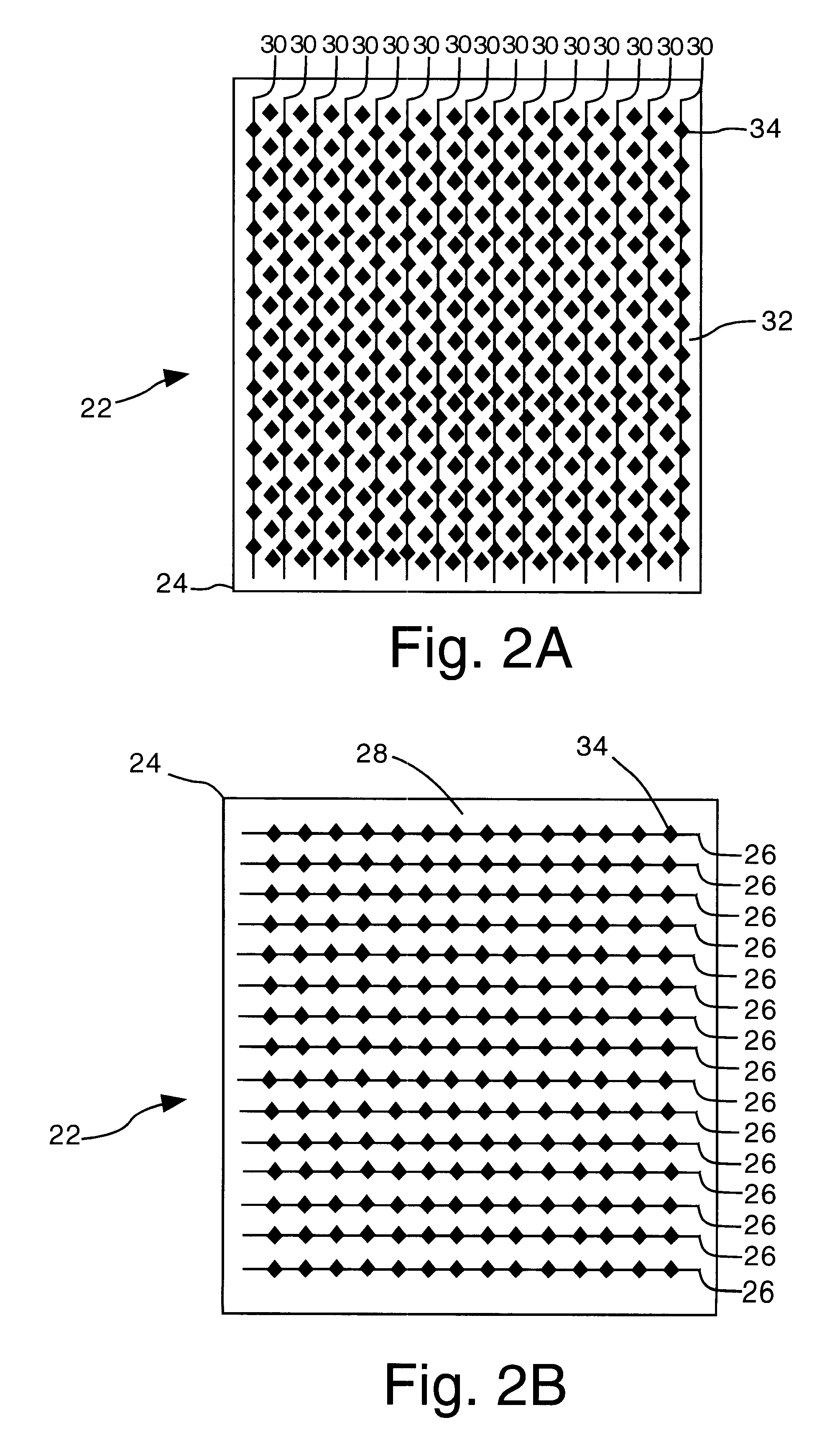Object position detector with edge motion feature and gesture recognition
a technology of gesture recognition and object position detection, which is applied in the direction of static indicating devices, instruments, mechanical pattern conversion, etc., can solve the problems of large size, high cost of trackball devices, and inability to detect objects with edge motion features,
- Summary
- Abstract
- Description
- Claims
- Application Information
AI Technical Summary
Benefits of technology
Problems solved by technology
Method used
Image
Examples
Embodiment Construction
This application is a divisional of co-pending application Ser. No. 08 / 899,317, filed Aug. 12, 1997, which is a continuation of co-pending application Ser. No. 08 / 623,483, filed Mar. 28, 1996, which is a continuation-in-part of co-pending application Ser. No. 08 / 320,158, filed Oct. 7, 1994, which is a continuation-in-part of co-pending application Ser. No. 08 / 300,387, filed Sep. 2, 1994, which is a continuation-in-part of co-pending application Ser. No. 08 / 115,743, filed Aug. 31, 1993, now U.S. Pat. No. 5,374,787, which is a continuation-in-part of co-pending application Ser. No. 07 / 895,934, filed June 8, 1992. The present invention continues the approach disclosed in the parent applications and provides more unique features not previously available. These improvements provide a more easily integrated solution, increased sensitivity, and greater noise rejection, increased data acquisition rate and decreased power consumption. The present invention allows for continuous self calibrat...
PUM
 Login to View More
Login to View More Abstract
Description
Claims
Application Information
 Login to View More
Login to View More - R&D
- Intellectual Property
- Life Sciences
- Materials
- Tech Scout
- Unparalleled Data Quality
- Higher Quality Content
- 60% Fewer Hallucinations
Browse by: Latest US Patents, China's latest patents, Technical Efficacy Thesaurus, Application Domain, Technology Topic, Popular Technical Reports.
© 2025 PatSnap. All rights reserved.Legal|Privacy policy|Modern Slavery Act Transparency Statement|Sitemap|About US| Contact US: help@patsnap.com



